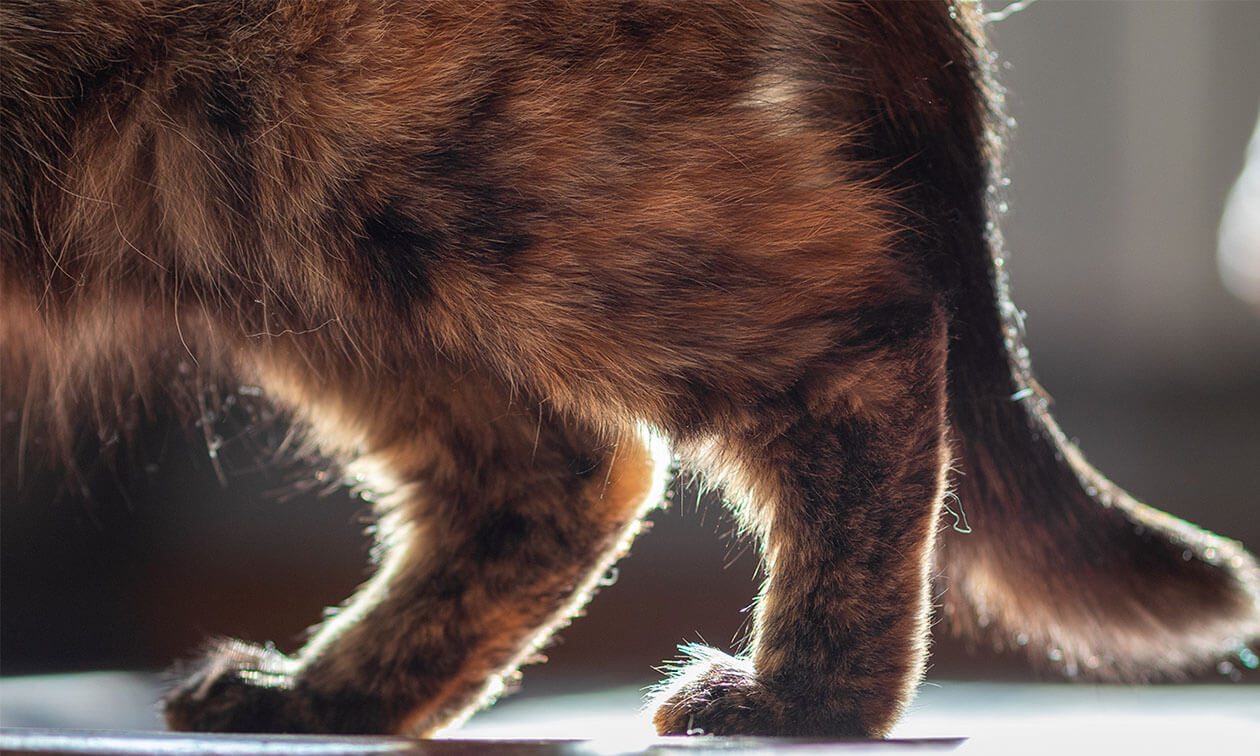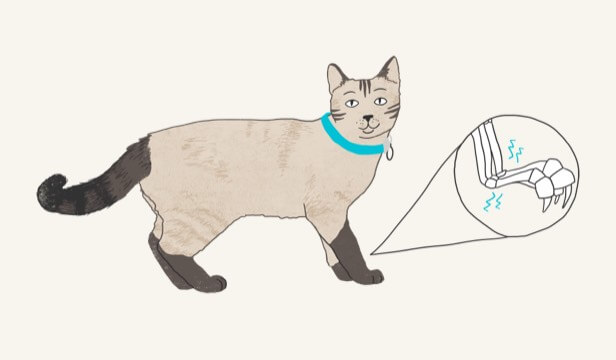Pain comes in many forms, but it falls into two primary categories: acute or chronic. Understanding the difference between acute and chronic pain in cats can help you catch it quickly and better work with your veterinarian to diagnose and treat it. Cats are very good at masking pain, so it is important for you to be able to notice the signs of pain in your cat and let your veterinarian know about it do they can help ease the pain.
The Difference Between Acute and Chronic Pain
In general, chronic vs acute pain are different based on the overall length in time the pain persists.
Acute pain is sudden and typically lasts for a short period, often a few days or weeks. This pain is usually caused by an injury or trauma, such as a broken bone or a surgical procedure. Acute pain serves a purpose — rapidly altering the animal's behavior to avoid or minimize damage (for example, removing your hand when placed on a hot stove). This makes it an "adaptive" pain.
On the other hand, chronic pain refers to pain that lasts for an extended period, often weeks, months, or even years. Frequently, pain lasting longer than 3 months is considered chronic. This type of pain can be caused by various underlying medical conditions, such as osteoarthritis, cancer, or dental disease.
Prolonged exposure to pain can cause changes to the pain transmission system. For this reason, it is a "maladaptive". It serves no protective function and persists even after the original injury or disease has healed. It’s not helpful for the body and can interfere with normal daily activities, reduce quality of life, and can lead to disability.
These two types of pain sometimes overlap. Uncontrolled acute pain can become chronic pain, and animals with chronic pain can experience acute episodes of breakthrough pain. The longer the pain has been going on, the more difficult it is to treat.
Signs of General Pain in Cats
Signs may indicate that your cat is in pain, such as changes in behavior, reduced activity level, decreased appetite, increased vocalization, and even facial expressions. It’s important to monitor your cat's behavior and seek veterinary care if you suspect your cat may be in pain because they’re great at hiding it. Establishing your cat's "normal" so you can more easily catch changes in that "normal" will help you identify pain quickly.
Signs of Acute Pain in Cats
Acute pain in cats is usually sudden and may be caused by an injury or trauma, such as a broken bone or a surgical procedure. Signs of acute pain may include:
• Vocalization, like meowing, hissing, or growling
• Agitation, pacing, or restlessness
• Hiding
• Panting
• Decreased activity level and less interest in things they enjoy
• Changes in posture or movement, like walking with a limp or holding a limb off the ground.
• Decreased appetite and drinking
• Changes in facial expression
If you notice any of these signs in your cat, it's important to seek veterinary care as soon as possible. Acute pain in cats can be very distressing and may require immediate treatment to alleviate their discomfort.
Signs of Chronic Pain in Cats
Chronic pain in cats can be caused by a variety of underlying medical conditions, such as osteoarthritis, dental disease, cancer, or kidney disease. This can significantly impact their quality of life. Some common signs of chronic pain in cats may include:
• Decreased activity level
• Changes in appetite
• Hiding or avoidance behavior
• Changes in grooming habits
• Vocalization
• Litter box avoidance/house soiling
• Changes in posture or mobility
• Changes in how your cat jumps or jumps down
• Going up and down steps differently
If you notice any of these signs in your cat, it's important to consult with your veterinarian to determine the underlying cause of the pain and develop an appropriate treatment plan.
Treatment of Acute vs. Chronic Pain
Acute and chronic pain are clinically different. Treatment of acute pain focuses on removing the source of pain and blocking pain transmission, whereas chronic pain management focuses on improving the cat's quality of life, typically by employing more than one treatment option (e.g., medication plus environmental modification) .
The treatment of acute pain in cats depends on the underlying cause of the pain. Treatment aims to relieve pain as quickly and safely as possible. Some common treatments for acute pain in cats may include:
- Medications: cats are very sensitive to medications to only use what your veterinarian prescribes
- Surgery (such as for a broken bone or an injury that requires repair)
- Cold or heat therapy applied to the affected area
- Environmental modifications providing a comfortable and quiet place for the cat to rest
- Rehab and physical therapy
Treating chronic pain in cats depends on the underlying cause of the pain. In general, the goal of treatment is to reduce pain and improve the quality of life for the cat. Some common treatments for chronic pain may include:
- Medications: see comment above
- Supplements (such as glucosamine or omega-3 fatty acids)
- A therapeutic diet that can help with chronic pain associated with obesity, arthritis, or kidney disease
- Physical therapy (such as massage or stretching) and rehab
- Environmental modifications providing soft bedding or ramps to help the cat move more easily
- Surgery (in some cases)
- Acupuncture and other pain-relieving treatments
It’s important to recognize and treat both types of pain in cats. Chronic pain can lead to decreased activity, behavioral changes, and a decreased quality of life. Acute pain can cause distress and discomfort and, if not properly managed, may lead to chronic pain. If you suspect your cat is experiencing pain, consult with your veterinarian to determine the underlying cause and appropriate treatment plan.
ZPC-02569
- Mathews K, Kronen PW, Lascelles D, et al. Guidelines for recognition, assessment and treatment of pain. J Small Anim Pract. 2014;55(6):E10-E68. doi: 10.1111/jsap.12200.



